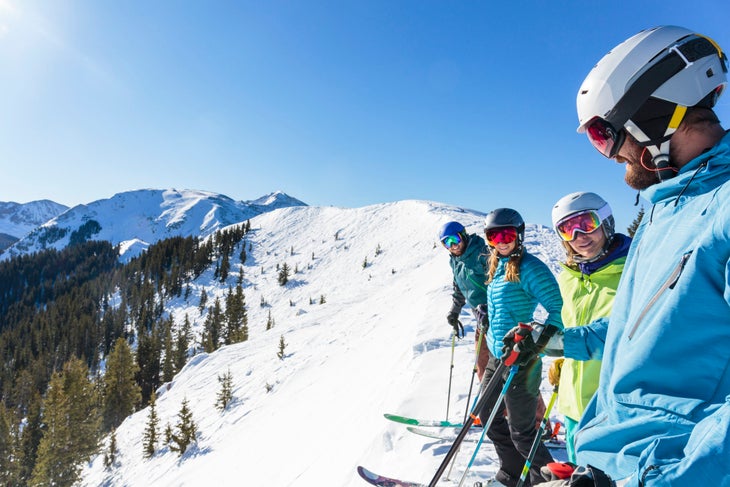Products You May Like
Get full access to Outside Learn, our online education hub featuring in-depth fitness, nutrition, and adventure courses and more than 2,000 instructional videos when you sign up for Outside+
Sign up for Outside+ today.
Our country’s pandemic-fueled love affair with skiing is still going strong. Today the National Ski Areas Association released skier visit data for the 2021-’22 season that’s currently winding down, and that number—61 million—reflects an impressive increase of 3.5 percent over the previous ski season.
“Skiing and snowboarding have rebounded in the wake of the Covid 19 pandemic, providing economic relief and thousands of jobs to communities across 37 states,” according to an NSAA press release. “Strong season pass sales and a continued desire for outdoor recreation are two of the primary contributing factors to the season’s record-breaking results.”
So, what does this mean? Lots of good stuff for the sport and the industry as a whole. First, a little perspective. The NSAA has been tracking skier visits since 1978—a “skier visit,” by the way, is every time a pass or lift ticket is scanned—and numbers steadily increased until around 2007’s 60.5 million. That’s when things leveled off, or even reversed course in some years. For example, the three seasons between 2015 and 2018 toggled between 52.7 and 54.7 million. Media reports of a dying ski industry were a dime a dozen.

When the pandemic hit and the resorts were forced to shut down in mid-March of 2020, visits that season were tallied at an understandingly lethargic 51 million, around 8 million fewer than the season before. We were all tickled when the industry rebounded so well last season with 59 million skier visits, but folks wondered if some of the new participants who came out when other pastimes weren’t available would stick with the sport.
Now we know that they likely did.
Breaking it down by location, the Rocky Mountain region (N.M., Colo., Utah, Wyo., Mont., and Idaho) brought out record numbers—25.2 million—the most in recorded history and almost 3 million more than last season. The Northeast, Midwest, and Pacific Southwest (Calif., Nev., and Ariz.) also reported season-over-season increases.
Typically, skier numbers align with snowfall, but not so this season. Our average snowfall across the country stalled at 145 inches, compared to a 10-year average of 166 inches, implying that skiers were not waiting for storms but rather getting out regularly despite a mediocre snow year.
Another draw to the slopes could lie in resort upgrades. Vail Resorts and Alterra Mountain Company alone spent over $500 million in capital improvements during the 2021-’22 season at their respective Epic and Ikon pass resorts, many of which were rolled over from the pandemic pause. And it’s not stopping there. Resorts are projected to spend $728 million in new lifts, infrastructure, amenities, and more over the next ski season.
Haven’t Bought Your Pass Yet? SKI’s Complete Multipass Buyer’s Guide
Season pass sales align with this overall increase in skier numbers, with passes comprising more skier visits than day tickets to the tune of 51.9 percent. The popularity of Ikon, Epic, Mountain Collective, Indy, and even the smaller offerings from the Power Pass and Powder Alliance show no signs of letting up as skiers continue to understand the great deals they offer.
It wasn’t all good news, though. According to the NSAA, staff shortages remained a huge problem this past season, with an average of 75 positions left unmanned at ski areas across the country. About 81 percent of resorts acknowledged that they struggled with hiring and retaining employees, which speaks in part to the well documented issues around ski-town housing and labor shortages and low wages. Vail Resorts and Alterra have both put programs in place to counter this, but we won’t know if it will be enough until next season.
Also Read: What Vail Needs to Fix If It Wants To Retain Skiers—And Their Respect
Only time will tell if skier numbers will continue to grow, but there’s no doubt we’re headed in the right direction. Read the full NSAA press release here, and dive into the historical data around not only skier visits but also demographics, diversity stats, and more here.
